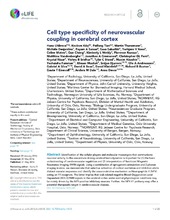| dc.contributor.author | Uhlirova, Hana | en_US |
| dc.contributor.author | Kiliç, Kivilcim | en_US |
| dc.contributor.author | Tian, Peifang | en_US |
| dc.contributor.author | Thunemann, Martin | en_US |
| dc.contributor.author | Desjardins, Michèle | en_US |
| dc.contributor.author | Saisan, Payam A. | en_US |
| dc.contributor.author | Sakadžić, Sava | en_US |
| dc.contributor.author | Ness, Torbjørn Vefferstad | en_US |
| dc.contributor.author | Mateo, Celine | en_US |
| dc.contributor.author | Cheng, Qun | en_US |
| dc.contributor.author | Weldy, Kimberly L. | en_US |
| dc.contributor.author | Razoux, Florence | en_US |
| dc.contributor.author | Vandenberghe, Matthieu | en_US |
| dc.contributor.author | Cremonesi, Jonathan A. | en_US |
| dc.contributor.author | Ferri, Christopher G.L. | en_US |
| dc.contributor.author | Nizar, Krystal | en_US |
| dc.contributor.author | Sridhar, Vishnu B. | en_US |
| dc.contributor.author | Steed, Tyler C. | en_US |
| dc.contributor.author | Abashin, Maxim | en_US |
| dc.contributor.author | Fainman, Yeshaiahu | en_US |
| dc.contributor.author | Masliah, Eliezer | en_US |
| dc.contributor.author | Djurovic, Srdjan | en_US |
| dc.contributor.author | Andreassen, Ole Andreas | en_US |
| dc.contributor.author | Silva, Gabriel A. | en_US |
| dc.contributor.author | Boas, David A. | en_US |
| dc.contributor.author | Kleinfeld, David | en_US |
| dc.contributor.author | Buxton, Richard B. | en_US |
| dc.contributor.author | Einevoll, Gaute | en_US |
| dc.contributor.author | Dale, Anders | en_US |
| dc.contributor.author | Devor, Anna | en_US |
| dc.date.accessioned | 2016-09-22T13:42:20Z | |
| dc.date.available | 2016-09-22T13:42:20Z | |
| dc.date.issued | 2016-05-31 | |
| dc.Published | eLIFE 2016, 5:e14315 | eng |
| dc.identifier.issn | 2050-084X | |
| dc.identifier.uri | https://hdl.handle.net/1956/12827 | |
| dc.description.abstract | Identification of the cellular players and molecular messengers that communicate neuronal activity to the vasculature driving cerebral hemodynamics is important for (1) the basic understanding of cerebrovascular regulation and (2) interpretation of functional Magnetic Resonance Imaging (fMRI) signals. Using a combination of optogenetic stimulation and 2-photon imaging in mice, we demonstrate that selective activation of cortical excitation and inhibition elicits distinct vascular responses and identify the vasoconstrictive mechanism as Neuropeptide Y (NPY) acting on Y1 receptors. The latter implies that task-related negative Blood Oxygenation Level Dependent (BOLD) fMRI signals in the cerebral cortex under normal physiological conditions may be mainly driven by the NPY-positive inhibitory neurons. Further, the NPY-Y1 pathway may offer a potential therapeutic target in cerebrovascular disease. | en_US |
| dc.language.iso | eng | eng |
| dc.publisher | eLife | eng |
| dc.rights | Attribution CC BY | eng |
| dc.rights.uri | http://creativecommons.org/licenses/by/4.0/ | eng |
| dc.title | Cell type specificity of neurovascular coupling in cerebral cortex | en_US |
| dc.type | Peer reviewed | |
| dc.type | Journal article | |
| dc.date.updated | 2016-09-12T12:46:03Z | |
| dc.description.version | publishedVersion | en_US |
| dc.rights.holder | Copyright Uhlirova et al. | |
| dc.identifier.doi | https://doi.org/10.7554/elife.14315 | |
| dc.identifier.cristin | 1374691 | |

